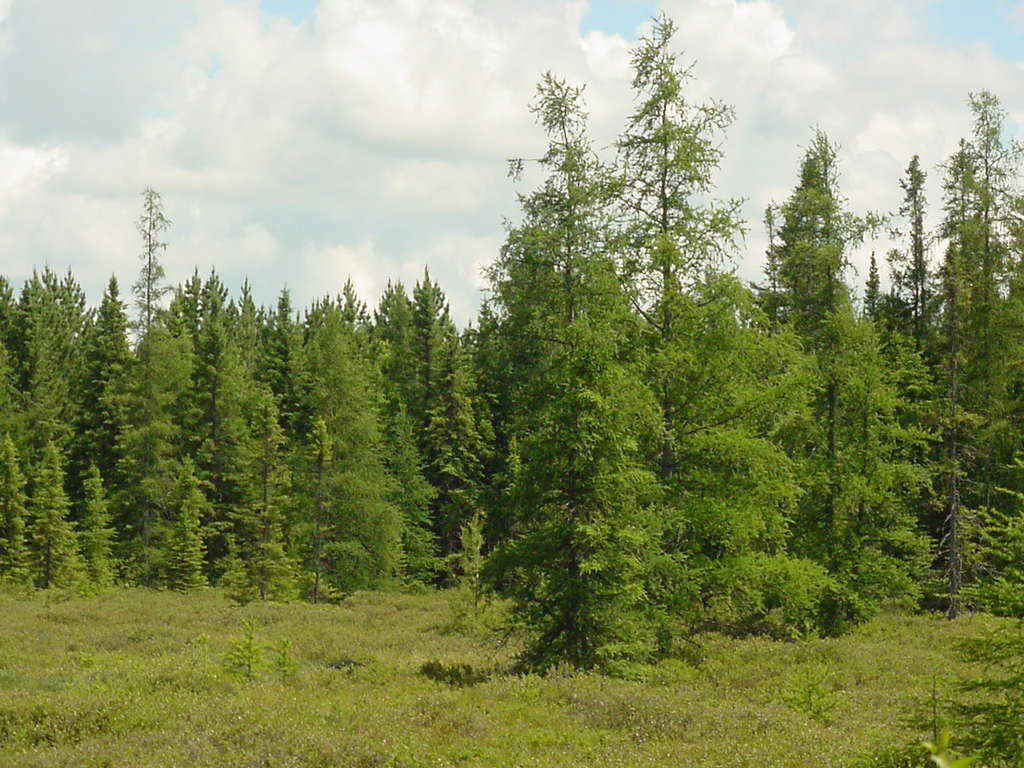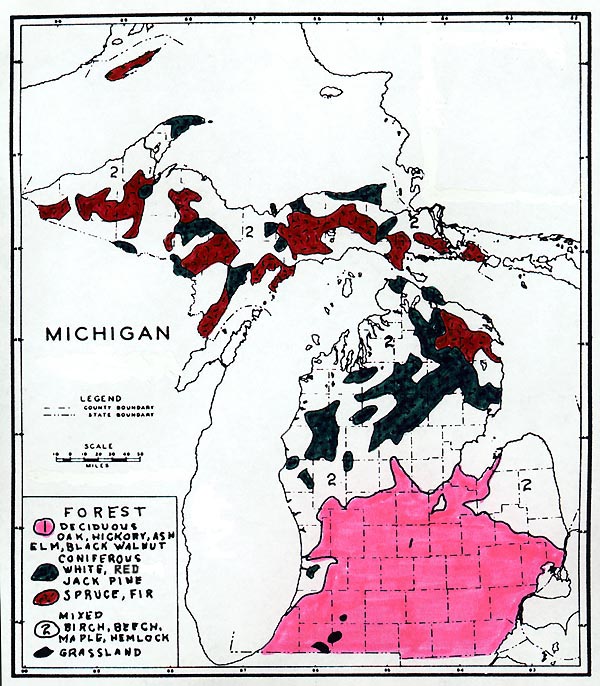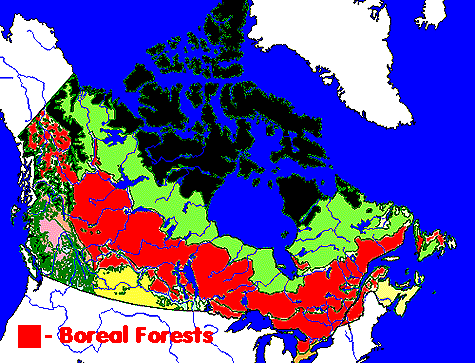BOREAL FOREST
The boreal forest (from Boreas, Greek God of the north wind) is one of the world's largest
biomes, covering almost 6800 miles across the northern hemisphere. It can also be found on
high mountains such as the Alps in Europe, and the Appalachians and southern Rockies in
the United States. Another name for the biome is taiga, a Russian word for a marshy pine
forest. The taiga is characterized by a cold climate, a low rate of precipitation, and a
short growing season. Though its summer is longer than the tundra to its north, the taiga
climate is still harsh. In the winter, temperatures can be even lower than regions farther
north, especially in the interior of the continents, where warm air from the sea has
little effect in moderating the cold. Frost covers the region for up to ten months each
year. In addition, most of the taiga is permanently covered in water since underground
frost prevents any water from draining away. The severity of winters limits the diversity
of animal life in the taiga.

Source: Photograph by Randy Schaetzl, Professor of Geography - Michigan State University
The flora of the best-developed, peaty black-spruce bogs in the UP is
indistinguishable from the vegetation that is typical of the poorly drained, boreal
landscapes more than 1,000 miles to the north.
The survival of these boreal (translation: cold) communities in a climate that is only
marginally conducive to their growth can be attributed to the poorly drained sites where
cold soils, deficient oxygen in the soil water, and high acidity compensate for the
marginal climate and create local habitats on which other species from the nearby uplands
are less able to compete. Thus, the bogs are dominated by plants that are most successful
in this type of habitat only-geographically, they are the plants of high-latitude North
America.

Source: Photograph by Randy Schaetzl, Professor of Geography - Michigan State University

Source: Unknown
The Boreal Forest dominates the Canadian landscape, although it is widespread on Isle
Royale and some boreal plants and trees locally are dominant on cold, wet sites in the UP.

Source: Unknown
The word "boreal" means personification of the North Wind. It is a poetic way of
describing the northern lands of rivers, lakes, untamed beauty, and the glorious forests
growing on the rock face of the earth. Boreal Forests consist of a mixture of
hardwood, deciduous trees (whose leaves turn to amazing colors of scarlet, yellow, orange
and crimson once they get an icy breath by Jack Frost) and the evergreen conifers like
pine and spruce, which keep their green mantles all year around. Mixed in
among these are the shrubs like juniper and sumac, as well as the scrub willow. Deciduous
trees of the boreal forest include the mighty maple, the elm, oak, and the birch tree. The
birch tree provided the materials for the canoes that carried explorers through the boreal
forest. In addition, the birch bark was used for pots and pans, and lacing material. It
was in birch bark kettles, that the Indians first boiled down maple syrup from sap. The
boreal forests are home to a wide diversity of flora and fauna.
Moose and deer browse in the openings, while eagles and other raptors scream overhead.
Beavers build dams, while bears forage through three of the four seasons. The boreal
forest of Canada represent some of the last wild frontiers left in North America.
Source: Photograph by Randy Schaetzl, Professor of Geography - Michigan State University
Spruce trees are recognizable by their short needles, which have rounded ends, and by their cones, which hang downward. Spruce makes up a small part of the mixed forest associations of northern Michigan, usually on wetter or colder sites.
Parts of the text on this page have been modified from L.M. Sommers' book entitled, "Michigan: A Geography".
This material has been compiled for educational use only, and may not be reproduced without permission. One copy may be printed for personal use. Please contact Randall Schaetzl (soils@msu.edu) for more information or permissions.